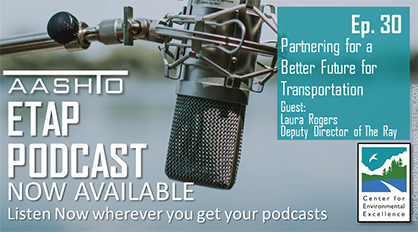This episode of the Environmental Technical Assistance Program or ETAP Podcast interviews Laura Rogers (seen above), deputy director of The Ray, to examine the future of roadways in America.
Founded in 2014, The Ray is a Georgia-based corporate venture devoted to roadway technology testing and collaborates with a number of state departments of transportation across the country. For example, in 2019, it formed a public-private-philanthropic partnership with the Georgia Department of Transportation to create and install a digital testing environment focused on critical interstate use cases, such as crash and weather warnings, for stakeholder engagement and education.
The first phase of work focused on an 18-mile corridor of rural interstate, known as The Ray Highway, and established as a connected vehicle ecosystem with six dual-mode and dual-active roadside radios, a number of cellular V2X or C-V2X equipped vehicles owned by the Georgia DOT connected to Panasonic’s CIRRUS cloud-based data management platform.

Additionally, in April, The Ray and consulting firm NGI recently released the NextGen Highways Feasibility Study for the Minnesota Department of Transportation that examined strategies for “co-locating” electric and communications infrastructure in highway right-of-ways or ROWs.
That study focused on the potential deployment of buried, high-voltage/direct current or HVDC transmission lines within Minnesota interstate and highway ROWs – an effort that offers broader implications for highway ROW strategies in other states.
In this episode of the ETAP podcast, Rogers discussed the “safety, condition, and sustainability” concerns surrounding America’s road networks, which she stressed are “vital” to the nationwide movement of goods and people.
Prior to joining The Ray, Rogers served as the sustainability and energy program manager at the Maryland Department of Transportation for six years as part of a long career in the federal and private sectors working on environmental management and sustainability issues.
To listen to this podcast, click here.

